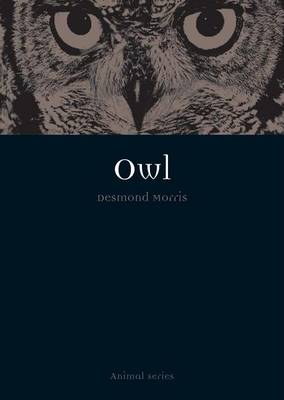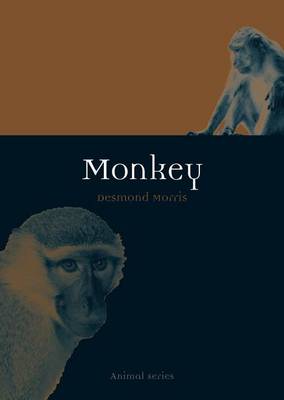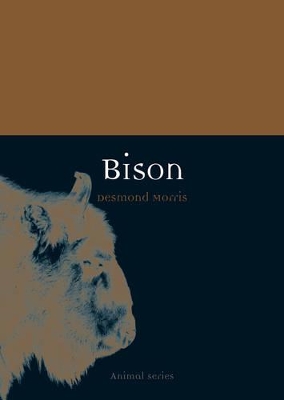Animal
4 total works
The owls are not what they seem. From ancient Babylon to Edward Lear's The Owl and the Pussycat and the grandiloquent, absent-minded Wol from Winnie the Pooh to David Lynch's Twin Peaks, owls have woven themselves into the fabric of human culture from earliest times. Beautiful, silent, pitiless predators...Read more
The owls are not what they seem. From ancient Babylon to Edward Lear's The Owl and the Pussycat and the grandiloquent, absent-minded Wol from Winnie the Pooh to David Lynch's Twin Peaks, owls have woven themselves into the fabric of human culture from earliest times. Beautiful, silent, pitiless predators of the night, possessing contradictory qualities of good and evil, they are enigmatic creatures that dwell throughout the world yet barely make their presence known. In his fascinating new book, bestselling author and broadcaster Desmond Morris explores the natural and cultural history of one of nature's most popular creatures. Morris describes the evolution, the many species, and the wide spread of owls around the world excluding Antarctica, owls are found on every land mass, and they range in size from 28 centimetres (the Least Pygmy Owl) to more than 70 centimetres tall (the Eurasian Eagle Owl). As a result of their wide distribution, owls also occur in the folk-tales, myths and legends of many native people, and Morris explores all these, as well as the many examples of owls in art, film, literature and popular culture.
A new title by an acclaimed author, and featuring many telling illustrations from nature and culture, "Owl" will appeal to the many devotees of this emblematic bird. Despite the fact that many have never seen or even heard an owl, he illustrates through this enticing read that the owl's presence is still very real to us today.
A new title by an acclaimed author, and featuring many telling illustrations from nature and culture, "Owl" will appeal to the many devotees of this emblematic bird. Despite the fact that many have never seen or even heard an owl, he illustrates through this enticing read that the owl's presence is still very real to us today.
The monkey has remarkable intelligence and adaptibility and has enjoyed a close relationship over millennia with human societies. Monkey deities feature prominently in the ancient religions of India, China, Egypt and Central America. Among peoples of tropical Africa, monkey masks and images are still in use in various ceremonies,...Read more
The monkey has remarkable intelligence and adaptibility and has enjoyed a close relationship over millennia with human societies. Monkey deities feature prominently in the ancient religions of India, China, Egypt and Central America. Among peoples of tropical Africa, monkey masks and images are still in use in various ceremonies, dances and rituals. Monkeys are present in the human arts of carving, cartoons and painting, as Desmond Morris explores in this book. Yet numerous species continue to be exploited by humans in ways as various as labouring on coconut farms, performing in many parts of Asia for tourists and in the West in circuses, serving as substitute astronauts in space experiments and working as domestic companions for the disabled. New monkey species are still being discovered, for example the blond capuchin (long thought extinct) in Brazil in 2006, and the Burmese snub-nosed monkey in 2010. But the future is not secure: some species are declining at a frightening rate, and logging and related agribusiness industries daily shrink further their natural habitats. And monkeys are bushmeat in some tropical countries.
Morris's Monkey is the up-to-date appraisal of the past, present and possible future of one of the most inquisitive and playful animals on our planet.
Morris's Monkey is the up-to-date appraisal of the past, present and possible future of one of the most inquisitive and playful animals on our planet.
The leopard is the ultimate cat. It makes the lion and the tiger appear overblown and all the other members of the cat family look puny. Whereas lions hunt in the open and then share their kill, the leopard is solitary, stealthy and selfish. This cat ambushes its prey...Read more
The leopard is the ultimate cat. It makes the lion and the tiger appear overblown and all the other members of the cat family look puny. Whereas lions hunt in the open and then share their kill, the leopard is solitary, stealthy and selfish. This cat ambushes its prey and then carries it high into a tree where it can dine alone. The leopard has commanded respect and awe in mankind for centuries, and is called the 'perfect predator', capable of frustrating the most dedicated big game hunter. Leopards are known to attack humans, and the book contains some compelling images of this amazing animal in action. In Leopard, renowned zoologist Desmond Morris shows all sides of the animal's character: its athletic elegance, its predatory skill, its wary shyness, its cunning intelligence, its parental devotion and its preference for solitary living, even its capacity to seek revenge. Morris traces the evolution of leopards, their role in circuses, and how we are now making strides in their conservation. He also describes their rich symbolism, and looks at the leopard print in fashion, both haute couture and downmarket, as well as the leopard in art, literature, film and popular culture.
Bison once ranged across the Great Plains of North America in vast herds - early eighteenth century explorers described them as 'innumerable' - and at the beginning of the nineteenth century they numbered in the tens of millions. However, during the next century or so humans were responsible for...Read more
Bison once ranged across the Great Plains of North America in vast herds - early eighteenth century explorers described them as 'innumerable' - and at the beginning of the nineteenth century they numbered in the tens of millions. However, during the next century or so humans were responsible for the bison's near extinction in North America, slaughtering an estimated 50 million for their meat, pelts and fur, reducing the bison population to less than a thousand by 1890. Hunting of bison became so prevalent that travellers on longhaul trips in the Midwest would shoot them from their trains. Notable developments have been made in recent years to revive the decimated bison population of North America: farming of bison has increased their population to nearly 150,000, and the American bison is no longer considered an endangered species. In Bison renowned zoologist Desmond Morris explores the animal's evolution and habitat, from their first evidence in fossil records 2 million years ago to today.
He reveals the different sides to its personality - bison are extremely unpredictable and, while they normally appear lazy and calm, can attack at any moment - and describes the important differences between the European wisent and American bison, the only two species now surviving. The book also discusses depictions of the bison in art, from early painting to contemporary metal sculpture. This vibrantly illustrated book will appeal to anyone curious about the natural and cultural history of this iconic creature.
He reveals the different sides to its personality - bison are extremely unpredictable and, while they normally appear lazy and calm, can attack at any moment - and describes the important differences between the European wisent and American bison, the only two species now surviving. The book also discusses depictions of the bison in art, from early painting to contemporary metal sculpture. This vibrantly illustrated book will appeal to anyone curious about the natural and cultural history of this iconic creature.



